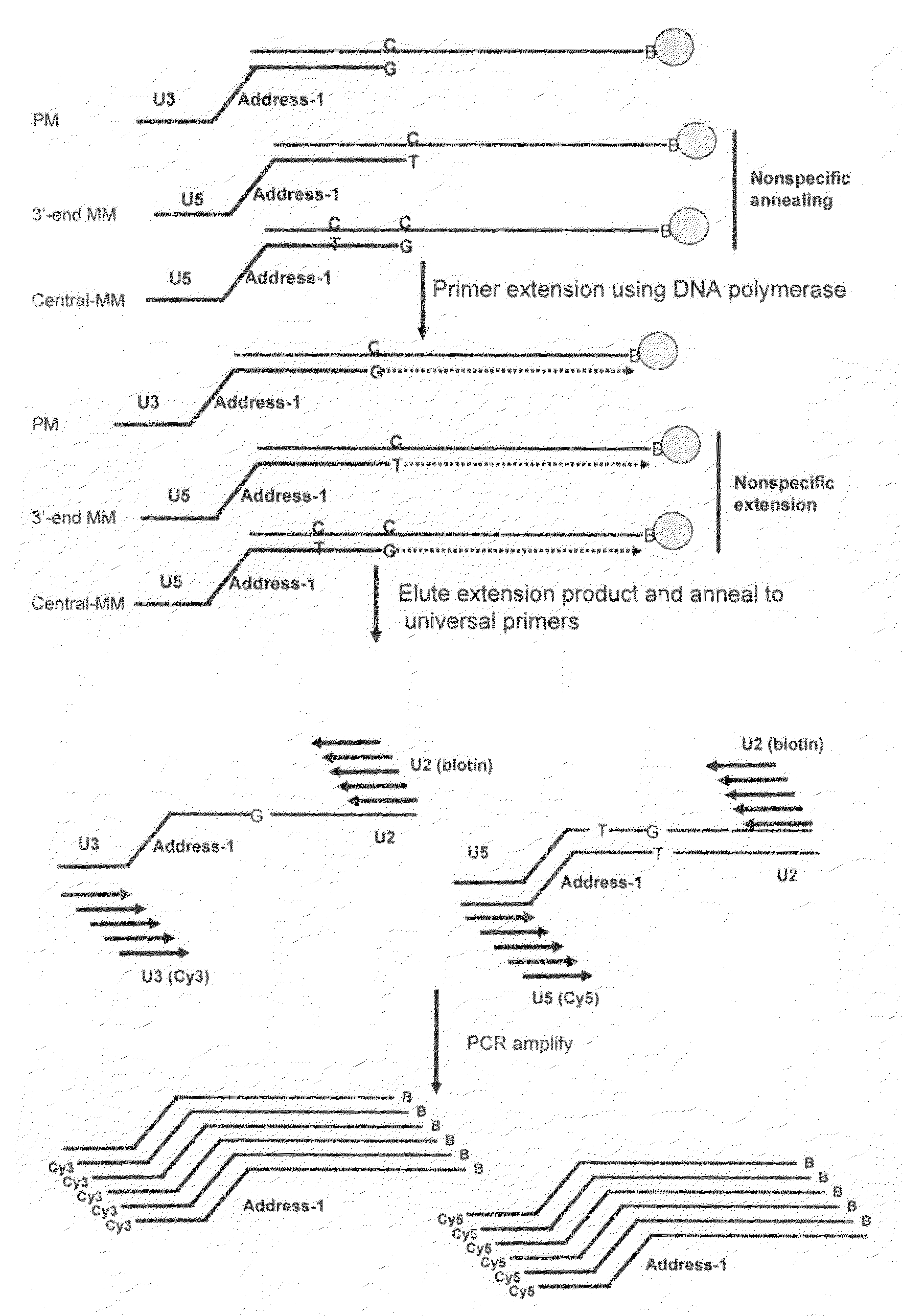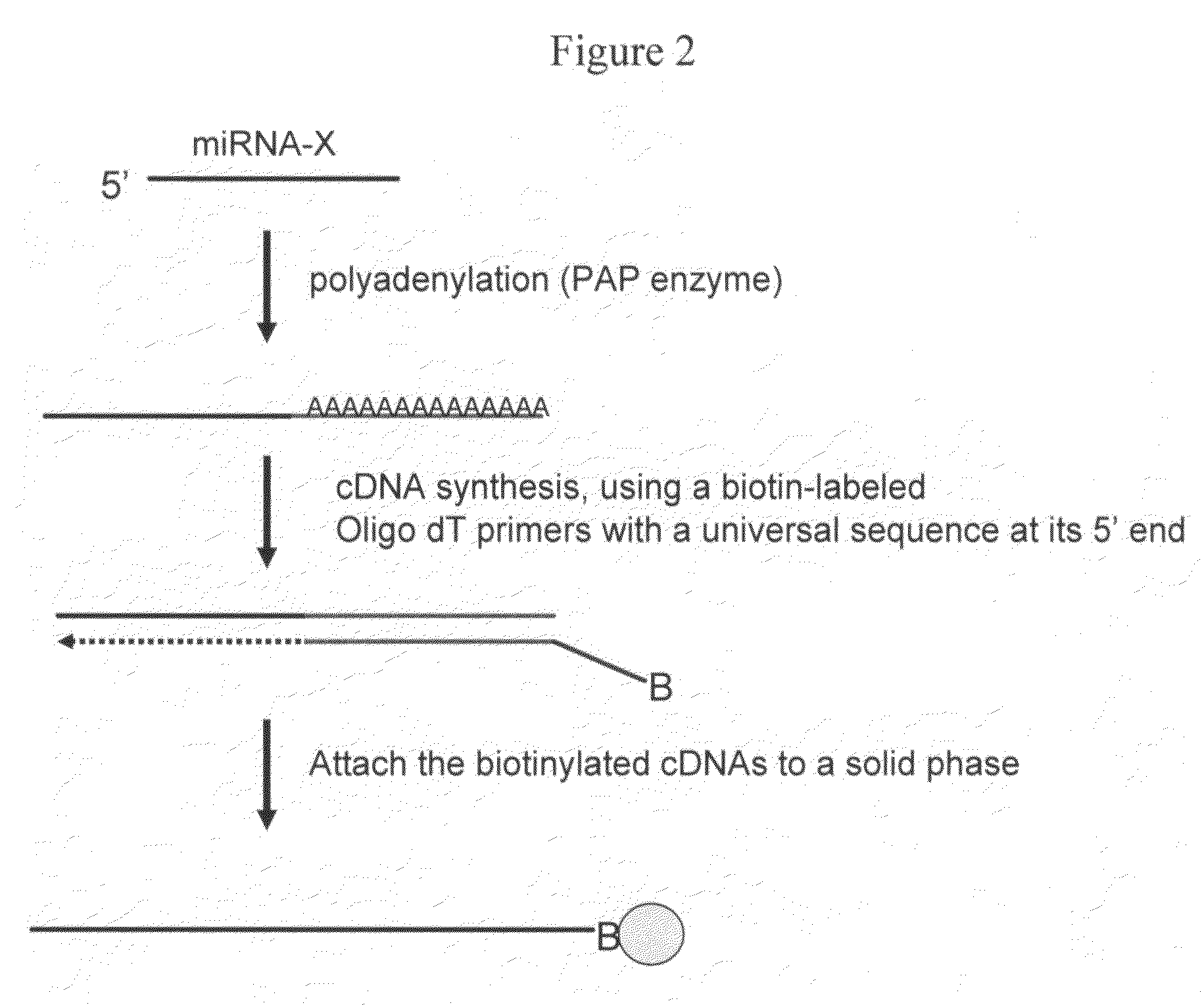Methods for detecting small RNA species
a detection method and small rna technology, applied in the field of improved detection methods, can solve problems such as difficulty in quantifying using conventional prior art methods
- Summary
- Abstract
- Description
- Claims
- Application Information
AI Technical Summary
Benefits of technology
Problems solved by technology
Method used
Image
Examples
example i
Multiplex MicroRNA Amplification
[0118]This Example demonstrates methods for modifying small RNA molecules to include universal priming sites, amplification of the modified small RNA molecules and detection of the resulting amplicons.
[0119]Total RNA samples obtained from PC3, MCF7, 293 or Hela cells were purchased from Ambion (Austin, Tex.). The samples were subjected to the two methods set forth below.
[0120]Two methods were used to attach a universal oligo sequence to 3′ end of small RNA species present in the RNA samples. In the first method, a 5′ phosphorylated chimera oligo was ligated to the 3′ end of RNA using T4 RNA ligase according to the manufacturer's instructions (Promega, Madison, Wis.; Cat # M1051). The 5′ end of the chimera contained 5 RNA bases, followed by 16 DNA bases of a first universal priming site at the 3′ end. In addition, the 3′ end of the oligo was modified with an inverted 3′-3′ bond to prevent self ligation. A biotin labeled primer, having a sequence comple...
example ii
MicroRNA Expression Profiling Using Universal Bead Arrays
[0127]This example demonstrates sensitive and reproducible expression profiling of microRNA species.
[0128]Dye labeled amplification products were obtained using the polyadenylation-based amplification method described in Example I. Briefly, a solid-phase primer extension step was carried out after assay oligos were annealed to immobilized cDNAs in order to enhance the discrimination among homologous miRNA sequences. In addition, universal PCR was used to amplify all targets prior to array hybridization. The solid-phase cDNA selection and enzymatic 3′-end mismatch discrimination in the primer extension step enhance the discrimination among homologous miRNA sequences and provide the assay with high specificity. The universal PCR amplification provides the assay with high sensitivity. PCR primers are shared among all target sequences, and amplicons are a uniform size. This allows unbiased amplification of the ligated oligo popula...
PUM
| Property | Measurement | Unit |
|---|---|---|
| Affinity | aaaaa | aaaaa |
Abstract
Description
Claims
Application Information
 Login to View More
Login to View More - R&D
- Intellectual Property
- Life Sciences
- Materials
- Tech Scout
- Unparalleled Data Quality
- Higher Quality Content
- 60% Fewer Hallucinations
Browse by: Latest US Patents, China's latest patents, Technical Efficacy Thesaurus, Application Domain, Technology Topic, Popular Technical Reports.
© 2025 PatSnap. All rights reserved.Legal|Privacy policy|Modern Slavery Act Transparency Statement|Sitemap|About US| Contact US: help@patsnap.com



